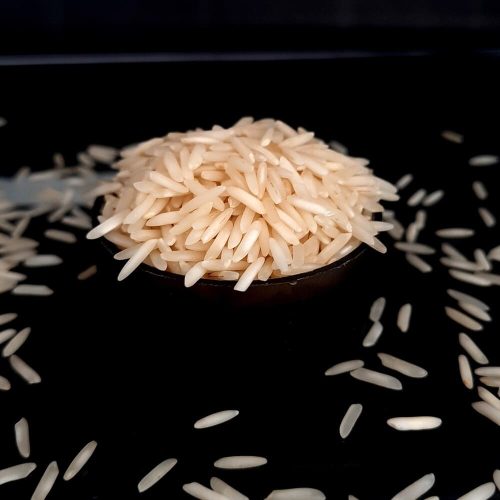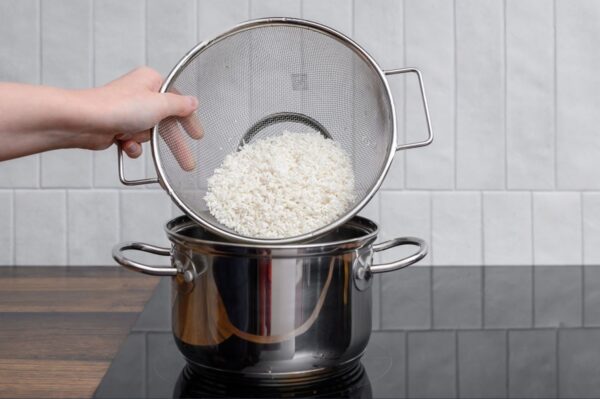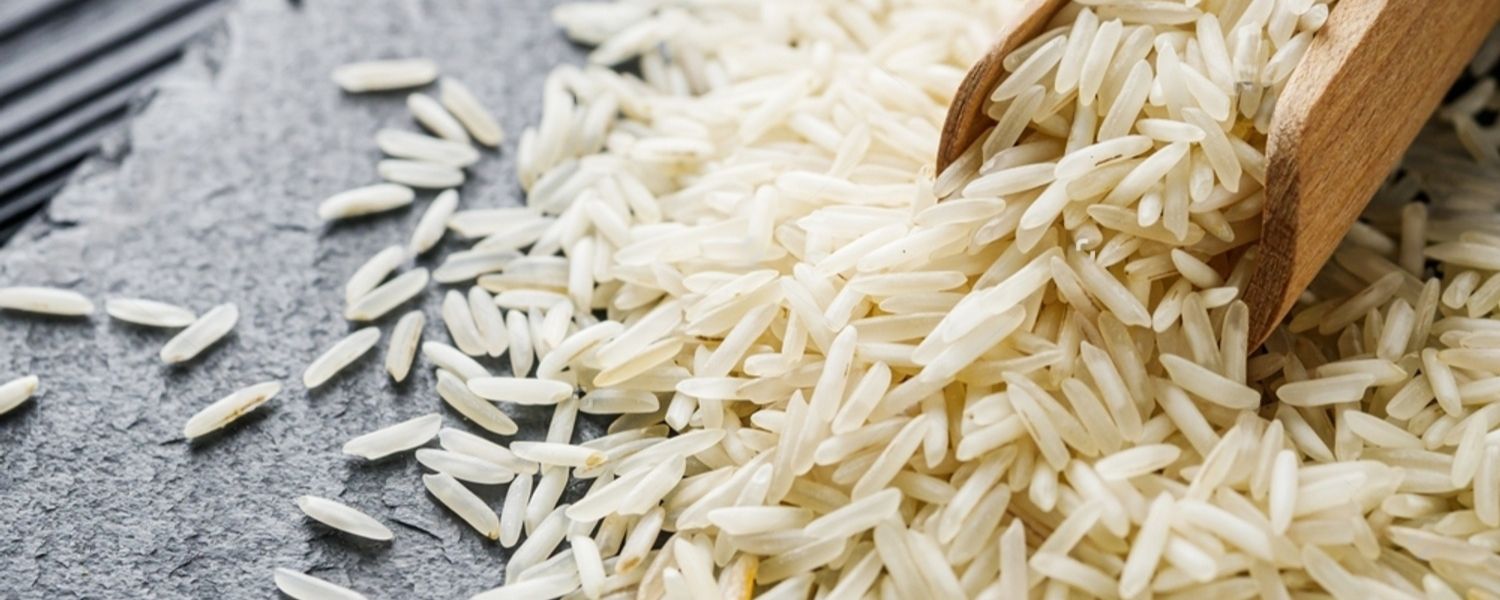Rice is more than just a staple food; it’s a symbol of culture, tradition, and sustenance for millions of people around the world. Among the vast varieties of rice available, one stands out for its unique aroma, delicate flavor, and exceptional quality—Sugandha Rice. In this blog, we’ll explore what makes Sugandha Rice special, how it’s cultivated, and how you can incorporate it into your meals to add a touch of exotic flair.
What is Sugandha Rice?

Sugandha Rice is a premium variety of long-grain rice originating from the fertile plains of India. The word “Sugandha” translates to “aromatic” in Hindi, aptly describing one of the rice’s most distinguishing features—its delightful fragrance. Often compared to Basmati rice, Sugandha Rice offers a similar aromatic experience but comes with its own set of unique qualities that make it a favorite among rice enthusiasts.
Unique Features of Sugandha Rice
- Aroma and Flavor
The first thing you’ll notice about Sugandha Rice is its captivating aroma. When cooked, it releases a sweet, floral scent that can fill your kitchen and whet your appetite. The flavor is subtle yet distinctive, making it an excellent base for a variety of dishes without overpowering other ingredients.
- Grain Size and Texture
Sugandha Rice grains are long and slender, typically elongating even more when cooked. The grains remain separate and fluffy, offering a pleasant mouthfeel. This texture makes it ideal for dishes where the individual grains are meant to stand out, such as pilafs and biryanis.
- Nutritional Benefits
Beyond its sensory delights, Sugandha Rice is also a good source of essential nutrients. It provides carbohydrates for energy, contains a moderate amount of protein, and is low in fat. Some varieties are enriched with vitamins and minerals like niacin, iron, and thiamine, contributing to a balanced diet.
How is Sugandha Rice Grown?
Cultivation Practices
Sugandha Rice is cultivated using traditional farming methods combined with modern agricultural practices. Farmers pay close attention to soil health, water management, and timing of planting and harvesting to ensure the highest quality grains.
Regions of Cultivation
Primarily grown in the northern states of India, such as Haryana, Punjab, and Uttar Pradesh, Sugandha Rice benefits from the rich alluvial soils and favorable climatic conditions of these regions. The combination of fertile land and dedicated farming techniques results in rice that meets high standards of taste and quality.
Environmental Conditions
The cultivation of Sugandha Rice requires specific environmental conditions—ample sunlight, moderate rainfall, and temperatures that allow the rice to mature properly. These conditions contribute to the development of its characteristic aroma and flavor.
Cooking with Sugandha Rice

- How to Cook Sugandha Rice
Cooking Sugandha Rice is straightforward, but following certain steps can enhance its natural qualities:
- Rinsing: Begin by rinsing the rice under cold water until the water runs clear. This removes excess starch and prevents the grains from sticking together.
- Soaking (Optional): Soaking the rice for about 20-30 minutes can help the grains cook more evenly and elongate further.
- Water Ratio: Use a rice-to-water ratio of 1:2. For every cup of rice, use two cups of water.
- Cooking Method: You can cook Sugandha Rice on the stovetop, in a rice cooker, or even in a pressure cooker. Bring the water to a boil, add the rice, reduce the heat to low, cover, and let it simmer until all the water is absorbed (about 15-20 minutes).
- Resting: After cooking, let the rice sit covered for an additional 5 minutes. Then, fluff it gently with a fork to separate the grains.
- Recipe Ideas
- Fragrant Pilaf: Sauté onions, garlic, and spices like cumin and cardamom in oil. Add the rice and water, and cook as usual for a flavorful pilaf.
- Vegetable Biryani: Layer cooked Sugandha Rice with spiced vegetables, nuts, and raisins. Bake it in the oven for a sumptuous one-pot meal.
- Simple Steamed Rice: Serve plain steamed Sugandha Rice alongside curries, stews, or grilled meats to soak up sauces and flavors.
- Tips for Best Results
- Spices: Adding whole spices like cloves or bay leaves during cooking can enhance the aroma.
- Broth Instead of Water: Use vegetable or chicken broth instead of water for added flavor.
- Garnishes: Sprinkle freshly chopped herbs like cilantro or mint before serving for a fresh touch.
Sugandha Rice in Global Cuisine
While Sugandha Rice has its roots in Indian cuisine, its appeal has crossed borders:
- Middle Eastern Cuisine: Used in dishes like pilafs with nuts and dried fruits.
- Asian Stir-Fries: Its firm texture holds up well in stir-fried rice dishes.
- Western Fusion: Chefs incorporate Sugandha Rice into salads and as a bed for grilled fish or meat.
Its versatility and unique characteristics make it a favorite among chefs and home cooks alike.
Why Choose Sugandha Rice?
- Quality and Consistency
Sugandha Rice undergoes strict quality control measures from cultivation to packaging. This ensures that each batch meets high standards, providing consistency in cooking and taste.
- Affordability
Compared to other premium aromatic rice varieties, Sugandha Rice offers a more budget-friendly option without compromising on quality or flavor.
- Healthier Option
With low fat and no cholesterol, Sugandha Rice aligns well with health-conscious diets. It’s also gluten-free, making it suitable for those with gluten sensitivities.
Where to Buy Sugandha Rice?
Sugandha Rice is increasingly available in international markets:
- Indian Grocery Stores: The most reliable place to find authentic Sugandha Rice.
- Online Retailers: Many online platforms offer Sugandha Rice with delivery options.
- Supermarkets: Some larger supermarkets with international sections may carry it.
When purchasing, look for reputable brands and check for certifications that ensure quality.
Storing Sugandha Rice
Proper storage extends the shelf life and maintains the quality of Sugandha Rice:
- Airtight Containers: Store the rice in airtight containers to prevent moisture and pests.
- Cool, Dry Place: Keep it in a cool, dry place away from direct sunlight.
- Long-Term Storage: For extended storage, consider refrigeration or freezing in sealed bags.
Cultural Significance
Sugandha Rice is more than just food; it’s part of cultural traditions:
- Festivals and Celebrations: Used in special dishes prepared during festivals and weddings.
- Hospitality: Serving aromatic rice is a sign of respect and hospitality in many cultures.
- Religious Offerings: Often used in rituals and offerings due to its purity and quality.
Conclusion
Sugandha Rice is a delightful addition to any kitchen. Its aromatic qualities, coupled with its versatile culinary uses, make it a grain worth exploring. Whether you’re a seasoned chef or a home cook looking to try something new, Sugandha Rice offers an opportunity to experience a taste of India’s rich agricultural heritage.
Related Posts

Basmati Rice – Wholesale Price & Mandi Rate Guide
Looking at the features of such long grains, their fragrance, and the pen-cooled elite, one can perhaps consider that Basmati rice is the mainstay of

Best Basmati Rice Exporters for Global Success
Are you searching for top-quality Basmati rice exporters to meet your international market demands? Look no further! In this comprehensive guide, we’ll walk you through
1509 Pesticide Free Golden Basmati Rice
Rice Specification Purity 95.00% Min Field Ad-mixture 5.00% Max. Average Grain Length 8.35 MM Moisture Under 13% Broken Grain Under 5% Damage/Discolour Grain 1% Immature

